This article was co-authored by wikiHow staff writer, Amy Bobinger. Amy Bobinger has been a writer and editor at wikiHow since 2017. She especially enjoys writing articles that help people overcome interpersonal hurdles but frequently covers a variety of subjects, including health and wellness, spirituality, gardening, and more. Amy graduated with a B.A. in English Lit from Mississippi College in 2011 and now lives in her hometown with her husband and two young sons.
There are 7 references cited in this article, which can be found at the bottom of the page.
This article has been viewed 25,381 times.
Learn more...
If you're already a cat lover, you don't need any convincing that felines rule the pet world. But if you've never spent much time around cats, or you had a bad experience with one in the past and don't feel comfortable around them, you might need a little help warming up to a new whiskered friend. Luckily, by understanding a little about their behavior and spending some time around a friendly feline, you can learn to appreciate cats in no time!
Steps
Understanding Cats
-
1Appreciate how low-maintenance cats are. If you have a busy lifestyle, cats are ideal. They clean themselves, use a litter box, and won't overeat if you give them a day's worth of food all at once. Plus, they enjoy having time to themselves, so they won't get upset if you have to leave to go to work. [1]
- Since cats require so little physical care, they're ideal pets for people who don't get around very well, like a person with chronic pain or someone who's elderly.[2]
- Try to appreciate that cats aren't needy. Sure, a cat might not come running up to you at the end of a long day of work. But the fact that they're aloof means that when a cat does decide that it loves you, it's a really gratifying feeling.
- Most cats will exhibit behaviors that show you that it does actually enjoy being near you, like sitting near your feet when you're on the couch or following you from room to room.
-
2Recognize that all cats are unique. Cats have distinctive personalities, with particular likes and dislikes, just like dogs or people. Try to take each cat on its own merit rather than judging it by other cats you've met before. Just because you had a bad experience doesn't mean all cats are like that.[3]
- Some cats love being cuddled, while others are happy to sit on the couch a foot away from you.
- Similarly, some cats love to play, while others want to nap in the sun most of the day.
Advertisement -
3Learn the language cats use to show affection. If you haven't spent a lot of time around cats, you might not even realize when a cat is trying to befriend you. Signs like a raised tail, rolling over and showing you its belly, or rubbing its face or side against your leg are all signs of affection.
- A cats signs of displeasure can also be subtle at first. Look for laid-back ears, a change in the cat's facial expression, or a bristling coat.
-
4Research the historical significance of cats. You might appreciate cats more if you learn more about their past. Visit your local library or search online to find out how different civilizations have viewed cats throughout the course of human history.
- For instance, the ancient Egyptians revered cats, and might have even worshiped them as demi-gods. There were even harsh penalties in ancient Egypt for hurting or killing a cat, temple priests kept large numbers of cats, and cats were frequently depicted in their art.[4]
- As you're learning more about cats, you might also be interested to discover that cats likely domesticated themselves, moving into human communities due to an increased presence of rats and mice.
Befriending a Cat
-
1Take your time and let the cat come to you. Just like you feel uncertain about the cat, the cat may feel unsure about you and your intentions. Spend time in the same room as the cat without trying to interact with it. Eventually, the cat will probably get curious and approach you.[5]
- It may help to scatter treats near where you're sitting so the cat will be more tempted to come near you.
- Some cats are very friendly and will approach you right away, but some cats might not feel comfortable around you for weeks.
-
2Let the cat smell your scent. Hold out a closed fist to the cat when it approaches you. Your closed hand will show the cat you don't intend to grab it, and it can smell your hand to become familiar with your scent.[6]
- You can also hold your hand so it's open, but turn your palm down.
- You can also leave one of your old T-shirts or blankets in the cat's living area so it will become more used to your scent.
-
3Pet the cat only when it seems relaxed around you. Cats love affection from people they feel comfortable around, but they don't like being grabbed or feeling trapped. Try lightly scratching the cat between its ears or behind its whiskers, or run your cupped palm all the way down the cat's back.[7]
- Cats usually don't like being touched on their paws or their bellies, so avoid those areas.
- Different cats like different things, so proceed slowly. Don't scratch or pet too hard, and stop if the cat doesn't seem to like what you're doing.
-
4Buy or make a toy so you can play with the cat. When they're kittens, cats use play to hone their hunting skills, and most never grow out of it. You can buy toys like balls with bells inside or toy mice, or you can make a toy out of items you find around your house. Cats love bags and boxes, balled-up paper, loose balls of string, and feathers tied to a stick.[8]
- You can also move a laser pointer across the floor for the cat to chase.
- If your cat doesn't seem interested in toys, try spritzing the toys with a little catnip spray. Catnip makes some cats feel extra playful, although some don't care much for it.
-
5Offer the cat an environment which provides for its needs. A cat needs to feel safe and secure, of course, but beyond that, they need a clean place to do their business, somewhere to sharpen their claws, and a variety of cozy places to nap. If your environment doesn't provide these things, the cat is likely to act in a way you see as misbehaving - scratching the furniture, for instance.[9]
-
6Respect the cat's need for downtime. Cats usually only play for about 5-10 minutes at a time, then they'll retreat to eat, bathe, or nap. When your cat loses interest in playing or being petted, let it go off and do its own thing for awhile. That way, you and the cat will both leave the session with a positive feeling.[10]
- Although each play session might be short, you can play several times each day!
Community Q&A
-
QuestionWhy do cats nap a lot more than dogs?
 FinnCommunity AnswerDomestic cats sleep a lot because wild cats do the same thing in the wild so that they have enough energy to hunt their prey and fight their predators with ease.
FinnCommunity AnswerDomestic cats sleep a lot because wild cats do the same thing in the wild so that they have enough energy to hunt their prey and fight their predators with ease. -
QuestionWhat should I do if a cat doesn't like me?
 FinnCommunity AnswerLeave it alone. It will come to you when it's ready to make up. If it approaches you, just slowly pet it.
FinnCommunity AnswerLeave it alone. It will come to you when it's ready to make up. If it approaches you, just slowly pet it.
References
- ↑ https://www.popsci.com/article/science/sorry-cat-haters-science-isnt-your-side#page-5
- ↑ https://www.americanhumane.org/fact-sheet/cats-seniors/
- ↑ https://pets.webmd.com/cats/features/how-to-bond-with-a-cat#1
- ↑ http://www.catmuseumsf.org/egyptcats.html
- ↑ https://pets.webmd.com/cats/features/how-to-bond-with-a-cat#1
- ↑ https://www.catster.com/cat-behavior/socializing-a-shy-cat
- ↑ https://www.wired.com/2014/10/cat-thinks-youre-huge-unpredictable-ape/
- ↑ https://www.bluecross.org.uk/pet-advice/how-play-your-cat
- ↑ https://www.wired.com/2014/10/cat-thinks-youre-huge-unpredictable-ape/

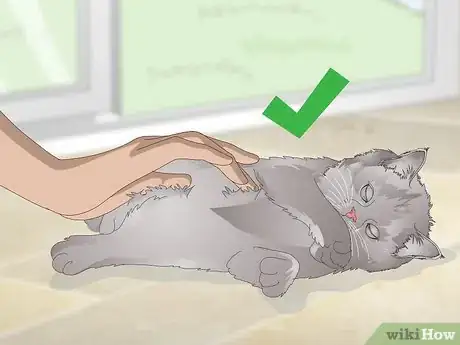
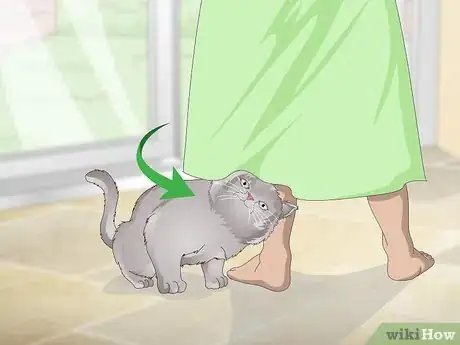

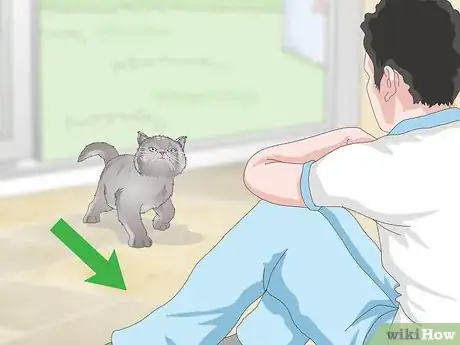

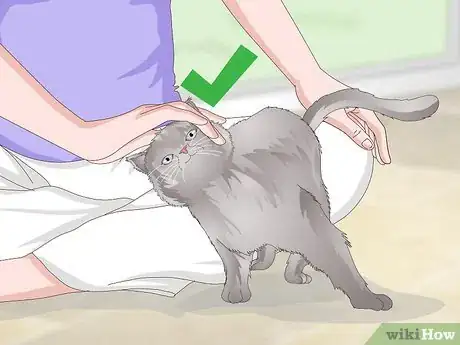

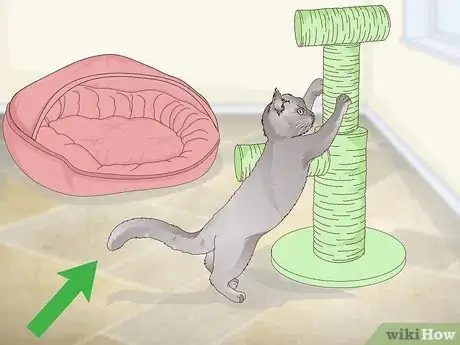
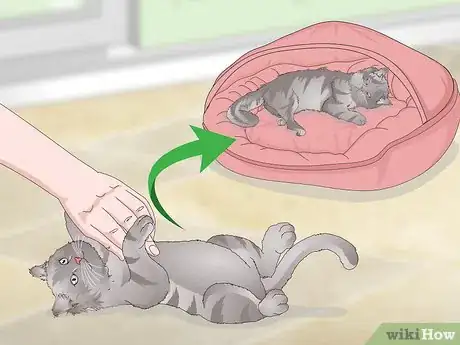




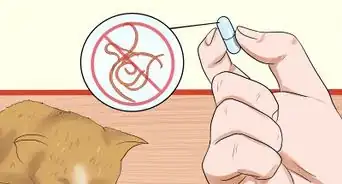


-Step-11-Version-6.webp)


















































